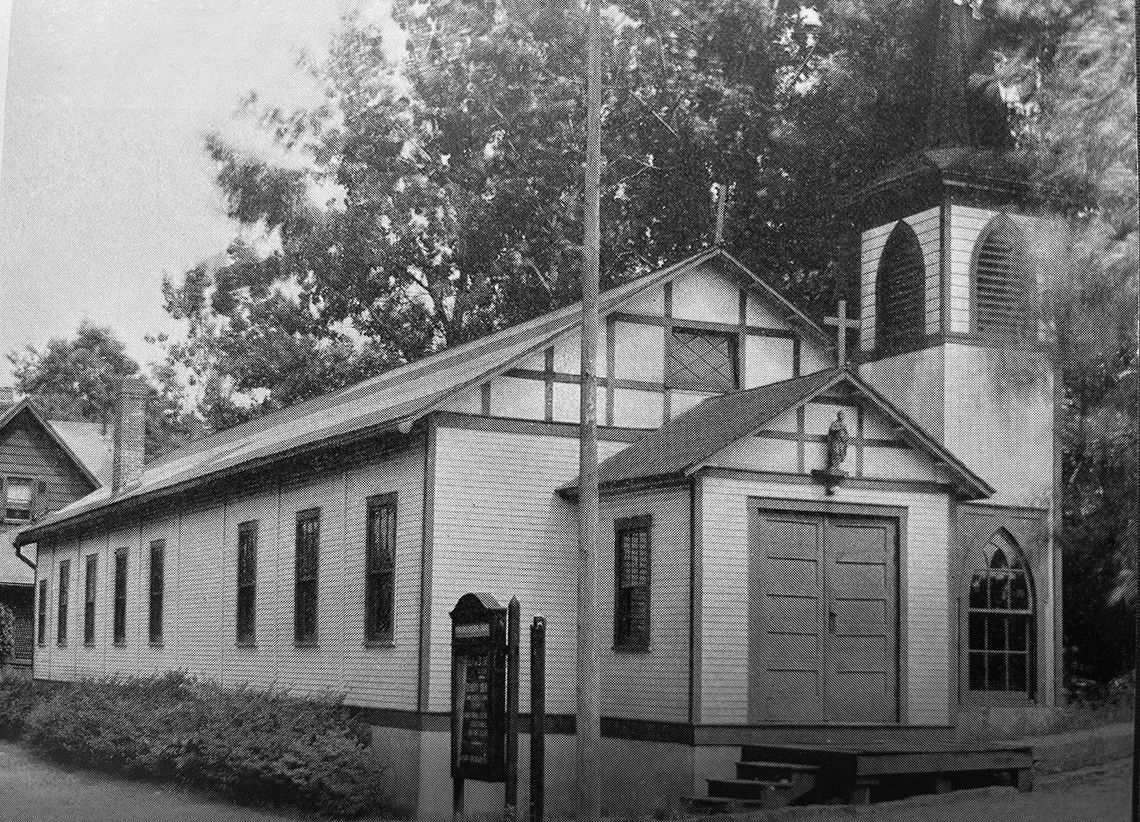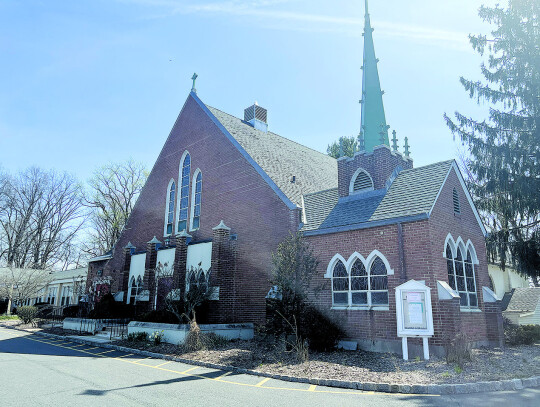The campus that previously held St. Peter's Episcopal Church until November of 2021 will soon be home to the Episcopal Diocese of Newark, according to an announcement from Bishop Carlye Hughes and diocesan trustees.
The Episcopal Diocese of Newark had been looking for a new home since NJPAC purchased the church's headquarters on Mulberry Street in Newark last year. That building will close in September of 2024, after which the church will immediately relocate to the Livingston location. The congregation of St. Peter's held its .nal worship service there on November 2, 2021. On May 7, 2022, the 148th Diocesan Convention voted to accept the closing of the church. A relocation committee selected the property after a months-long search of real estate in Newark and adjoining areas failed to turn up a location as suitable to the diocese's needs, according to Bishop Hughes.
WITH PICS: CHURCH (old on top, new one from Natalie on bottom, 1961 shot to left or right) Shown above in its early days, St. Peter's Episcopal Church in Livingston was established in 1917. By 1961, it had a new sanctuary, which looks much the same today (photo on page A-6), except for an addition to the east of the sanctuary.
The committee said that the former St. Peter’s Church has several attributes that made it an ideal choice, including its similar size to the previous location, ample on-site parking, and a location close to the demographic center of the diocese. The trustees also wanted to select a property that was built for worship, rather than a standard office building.
Sam Reckford, diocesan CFO, said the committee selected the Livingston location unanimously. “This choice made so much sense that even those who would have preferred that we stay in Newark or move to another urban location realized that this property was the best fit for our needs,” he said.
Before the Bishop and her staff can take occupancy, the office space will need to be renovated, and the electrical, plumbing and mechanical systems brought up to code. The nave will be adapted to become a large meeting space, with an area reserved for worship.
“During Holy Week we followed Jesus to the cross, through death, and into resurrection,” said Bishop Hughes. “So, it comes as no surprise to us, that even as the doors to St. Peter’s closed, God was already raising up a new life for parishioners as they joined other churches – and for the parish building itself. Though it will be a while before plans are complete and renovation can start, I am one of many involved in this project grateful for the opportunity to begin anew with a building already in our midst.”
A 100-Plus Year History
St. Peter’s Church was the original dream of its sole benefactor, Alexander Livingston Kean, who was a descendant of governor William Livingston, the first governor of the state of New Jersey and the man for whom Livingston Township was named. St. Peter’s Chapel, built by Kean as a temporary place of worship, was a pre-fabricated structure made in sections and held together with nuts and bolts.
It was erected at 94 East Mt. Pleasant Avenue, on property then covered with wild strawberries and known as Strawberry Hill.
The first service was held on Thanksgiving Day, November 29, 1916, with 64 people in attendance. The offering for the day, $44.55, was given to Saint Barnabas Hospital in Newark, the same institution that is now located in Livingston.
In 1916 there were only two known Episcopalians in Livingston. By 1949, however, St. Peter’s had 282 communicants and by 1956, the number was approaching 500. The church school enrollment was in excess of 200.
A building drive was launched in 1954 to provide new buildings to accommodate the growing congregation. A new school building was built and opened in February 1955. A new church with a chapel, choir loft, large undercroft and seating for 350 worshipers was built in 1961. The first service in the new church was held on Christmas Eve, 1961. The original pre-fabricated church was taken apart, moved to another location, and used for worship by another church.
The original vicarage (the vicar’s home) was built right by the road on East Mt. PleasantAvenue. When East Mt. PleasantAvenue was widened, a new L-shaped ranch style house for use as a vicarage/rectory was built.
The most recent addition to the church property was the Marlier Garden in honor of the church’s retired vicar, whose cremated ashes were the first to be buried there.
Attaining “Parish” Status
St. Peter’s was formed in 1916 as a “mission” church (not a selfsupporting congregation). Following Kean’s death in 1922, his heirs deeded the church property to the Episcopal Diocese of Newark.
A new mortgage had been needed to finance the combined cost of more than $350,000 for the three new church buildings built between 1954 and 1965. By November 1977, this mortgage was completely paid off and a mortgage burning celebration ceremony was held that December. Debt-free and self-supporting, the deed to the property was transferred from the diocese to St. Peter’s Church and St. Peter’s attained “parish” status in 1978. It closed its doors over four decades later, in 2021.




